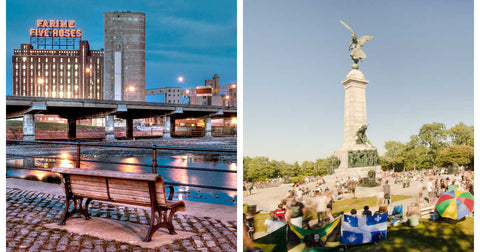The Least and Most Stressful Cities Index 2021

Data study determines the most, and least, stressful cities in the world, analysing a variety of indicators across governance, environment, finance and health to compare how stressful the living conditions are for citizens.
- The least stressful city is Reykjavik, Iceland, ahead of Bern, Switzerland and Helsinki, Finland. Mumbai, India, ranks as the most stressful city in the study, followed by Lagos, Nigeria and Manila, the Philippines.
- Manila is the most densely populated city in the study, ahead of Doha, Qatar and Kabul, Afghanistan.
- People living in Reykjavik, Iceland have the best air quality, followed by Edinburgh, United Kingdom and Wellington, New Zealand. The worst air quality was found to be in New Delhi, India, followed by Riyadh, Saudi Arabia and Karachi, Pakistan.
- Citizens in Oslo, Norway have the best access to healthcare, ahead of Sydney, Australia and Tokyo, Japan.
- Tokyo has the highest score for its Covid-19 response, meaning that it had the lowest stress impact on its citizens. Bangkok and Montreal ranked second and third.
Berlin, Germany, June 2021— VAAY.com, the CBD and well-being brand, has released a study which ranks cities by assessing how stressful their environments are for their inhabitants. As part of its mission to promote inner balance and mindfulness, the company decided to look into common external factors that make city-living stressful for urbanites. During this process, VAAY realised that it could directly compare multiple stress indicators in cities around the world to determine which cities are the least, and most, stressful for their citizens. The resulting index shines a light on the ever-present factors that influence a person’s stress levels, and gives insight into which global cities perform best in different areas and can be an example for their peers.
“Our objective with this study is to show what cities can achieve for their citizens through effective governance, robust environmental policies and well-resourced social welfare systems. The aim is not to single out the cities which may lag behind in any of these areas, but rather highlight those which are leading examples of what can be done to improve the wellbeing of their inhabitants,” comments Finn Age Hänsel, Co-Founder of VAAY. “We hope that the results of the study serve as a useful barometer for cities and citizens alike to reassess their environments and work together towards developing cities that are less stressful places to live.”
How the study was conducted:
To begin the study, VAAY considered which macro factors contribute to stress, narrowing them down to four broad categories. Next, over 500 global cities were assessed against a number of stress indicators in these categories, before those without reliable data were removed, leaving a final line-up of 100 cities.
The study started with factors related to governance - assessing safety and security, and socio-political stability as indicators of how comfortable someone can feel in a city. In order to include stress indicators for all segments of society, levels of gender and minority equality were also scrutinised, as these demographics often have a higher chance of experiencing stress due to societal frameworks shaped by local laws and policy decisions.
Following this, VAAY compared how stressful each city’s urban environment is by looking at population density statistics in addition to air, light, and noise pollution levels, the amount of traffic congestion and weather conditions. These indicators were included in order to capture the stress-inducing effect of atmospheric contamination and extreme weather conditions, for example wildfires, heatwaves, and periods of extended darkness, which are strongly associated with both physical and mental health conditions.
Next, a number of financial factors were evaluated, including unemployment rates, social security structures and local purchasing power. These indicators were included to reflect that economic problems are a cause of significant stress for many people, and have become increasingly widespread since the beginning of the pandemic.
Data regarding the quality and accessibility of healthcare in each city was then collated, including the level of mental healthcare access. Finally, a Covid Response Stress Impact score was calculated by analysing how stressful the pandemic response of each government has been for its citizens in addition to its effectiveness. The study reveals which cities have the most stressful environments for their citizens, and which lead by example as the least stressful cities.
Este es un extracto del comunicado de prensa completo. Dado que este documento excede el límite permitido por el correo electrónico, por favor visite este enlace para ver la versión PDF del comunicado de prensa completo: https://sweetspotpr.com/wp-content/uploads/Vaay/TMSC/MexicoCity.pdf. Por favor, tenga en cuenta que este comunicado de prensa es sólo para uso interno de los periodistas y no para su publicación directa. Si prefiere recibir el archivo como un archivo adjunto o un documento de Word, hágamelo saber y se lo enviaré en el formato solicitado.
Para ver los resultados y la metodología completa del estudio, por favor consulte la página de resultados aquí: https://vaay.com/en/pages/stressful-cities-index
